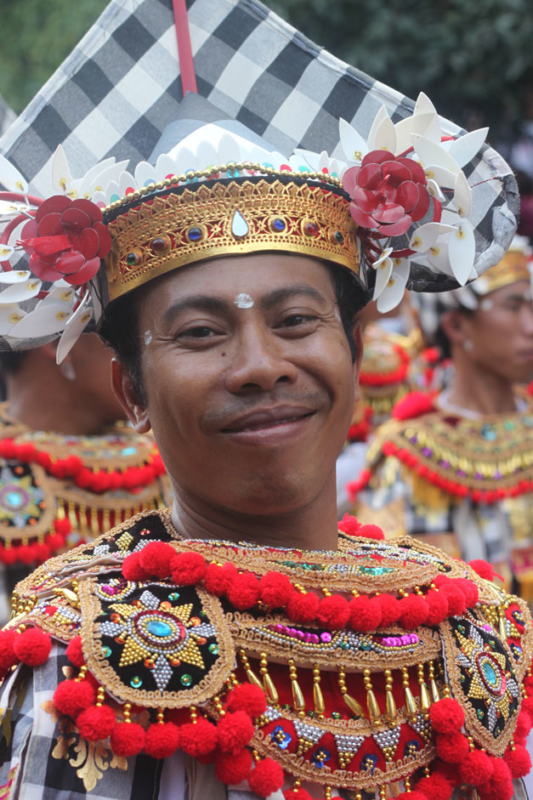Whilst Bali has been almost continually inhabited for the better part of the last 4000 years, the current Bali culture mostly originates from the 14th and 15th Centuries, when the Majapahit Hindu’s began to arrive from the nearby island of Java. These immigrants were met with open arms by the natives and intermarrying of the two peoples began to happen on a large scale.

Bali Culture and Religion: Past and Present
Currently around 93% of the islands inhabitants claim to follow Hinduism (or at least the Bali version of Hinduism). Despite the clear dominance of Hinduism on the island, the people of Bali are not aggressively Hindu. The caste system is observed, but not with anywhere near the strictness with which it is followed in mainland India. Muslims, Christians and Buddhists all call the island home. There are even a small number of natives who still practice the ancient Bali religion, though these aboriginals mostly keep to themselves in villages on remote parts of the island.
Throughout Indonesia Bali is referred to as the ‘Island of the Gods’, not only thanks to its many temples, but because ultimately on Bali the natives traditionally take on the most interesting parts of the various religions they come across, merging them together to form an amorphous religious culture the likes of which cannot be seen anywhere else.
Traditional Bali Culture in the 21st Century
Due to its location between the Indian and Pacific Oceans, Bali culture has been heavily influenced by Chinese, Hindu and Indian (Vedic and Islamic) cultures during the course of the island’s long history. Examples of this beautifully eclectic set of influences exist to this day, as the people of Bali proudly keep the practices of their forefathers alive and well.
In Bali religion is incredibly important to the natives, despite the often incomprehensible nature of the islands religious practices to foreigners and immigrants alike. The 20,000 temples of the island are kept well repaired, religious ceremonies take place regularly all over the island and the influences of the various religions clearly show themselves through the stunning art forms practiced as part of modern Bali culture.
As to be expected, the proto-Hindu Bali religion is the most well represented aspect of Bali culture, with many of the temples, art styles and ritualized dance forms of this religion still playing a vital part in most natives lives. That said, many of the temples on the island have a distinctly Chinese feel to them. Likewise the traditional clothing of the Bali natives have been clearly influenced by visitations from the historic Chinese and Indian empires.
Truly grasping the wondrously hybrid nature of Bali culture is something which can only be done by visiting the island for yourself. A trip which should certainly be made at least once in everybody’s lifetime. If you want to enjoy your home comforts whilst experience Bali culture, the Vilondo team can help you with that also.

